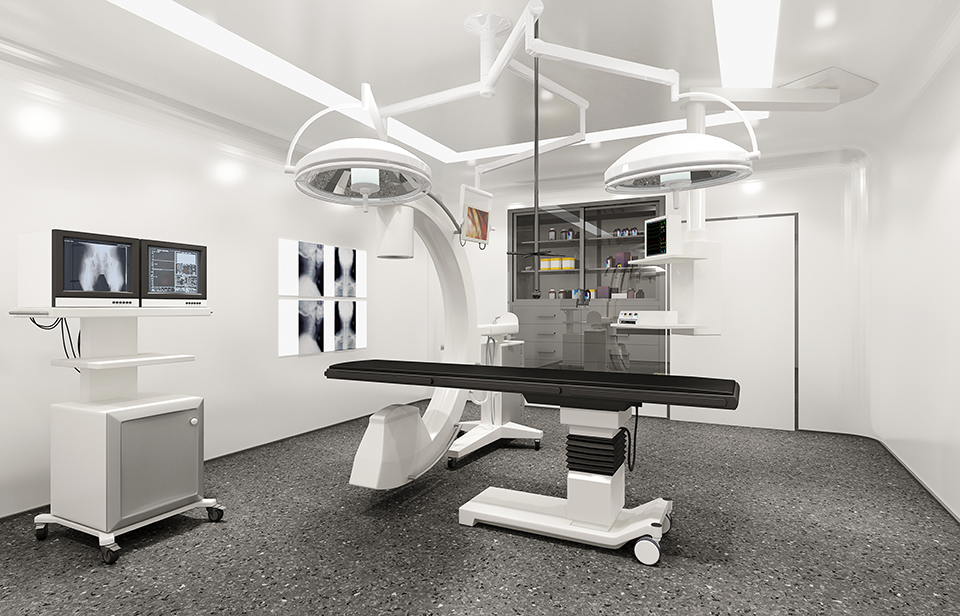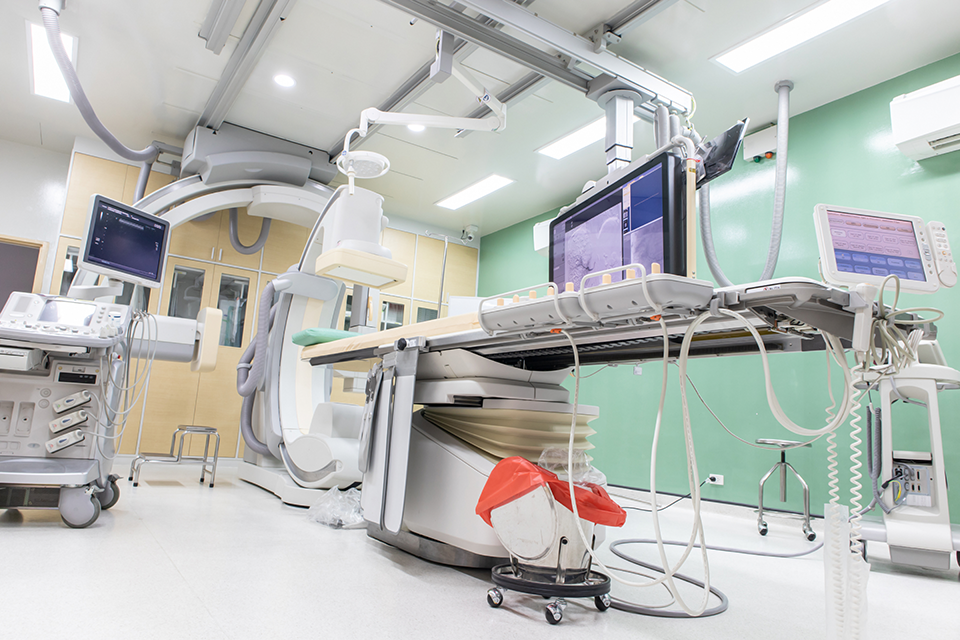IGT Challenges (and Solutions) for Hospital Administrators, Part 2: Meeting Demand
This is Part 2 in a 4-part series on hospital administrator IGT challenges and solutions. Part 1offered an overview of IGT in the modern hospital....
4 min read
Domico Med-Device September 05, 2023
This is Part 4 in our series on IGT challenges and solutions for hospital administrators. Part 1 introduced the importance of image-guided therapy (IGT) in modern healthcare. Part 2 discussed the integration challenges of IGT systems, and Part 3 explored training and maintenance hurdles. In this final installment, we’ll delve into justifying and funding IGT acquisitions, which are crucial for hospital administrators striving to stay at the forefront of medical innovation.
Justifying investment in image-guided therapy often hinges on three key points:
Cath labs, interventional radiology suites, and other departments cannot treat patients without IGT equipment. Modern patients are savvy and often compare options before seeking healthcare. If a facility doesn’t offer the procedure they need, they’ll choose a competitor. For example, a hospital lacking advanced interventional radiology capabilities might lose patients to a nearby facility that can perform minimally invasive treatments with greater precision and less recovery time. This not only impacts patient satisfaction but also the hospital’s bottom line as it loses potential revenue from these procedures.
Moreover, the availability of IGT equipment directly correlates with a hospital's ability to provide comprehensive care. Advanced imaging technology enhances diagnostic accuracy, treatment efficacy, and overall patient outcomes, making it an indispensable component of modern healthcare.
Insurers will not reimburse for procedures without justification. IGT enables hospitals to defend recommended procedures to insurance companies. If a procedure is performed without first obtaining the proper imaging, hospitals risk reimbursement denial. For instance, a cardiologist might need to use advanced imaging to justify the necessity of a stent placement, ensuring that the procedure is covered by the patient’s insurance.
IGT provides the documentation and evidence needed to support the medical necessity of procedures, thereby reducing the likelihood of reimbursement denials and ensuring that the hospital can recover the costs associated with patient care. This not only safeguards the hospital's financial health but also ensures that patients receive the necessary treatments without undue financial burden.
Administrators can point to improved patient outcomes, staff efficiency, and ROI, and back it up with metrics such as:
More same-day discharges
Reduced lab time
Reduced average interventional time
For example, one hospital administrator was able to show that their new cardio mapping system decreased procedure time by 15 minutes per case. Multiply that by “X” number of cases over a year and translate it to dollars, and it represented a significant savings for the hospital. This kind of data-driven justification not only demonstrates the immediate financial benefits of IGT but also its long-term impact on operational efficiency and patient throughput.
These metrics can be powerful tools in convincing stakeholders of the value of IGT investments. By presenting concrete data that highlights the efficiency gains and cost savings, administrators can build a compelling case for the acquisition of new equipment.
Once IGT is justified, administrators still need funding to acquire new equipment. Here are three ways to get it:
Emergency funding is almost always available with proper justification. If an IGT device goes down, the department goes down with it, so hospital administrators can request emergency funding to replace it. Note that emergency funding is typically only available for replacement equipment, not new devices that expand a hospital’s capabilities.
This type of funding is critical for maintaining uninterrupted patient care. For example, if an essential MRI machine breaks down, securing emergency funds to replace it ensures that diagnostic services can continue without delay, preventing potential disruptions in patient treatment plans.
Timing is often key to getting IGT in the budget. For example, there are almost always “extra” capital dollars available when hospitals invest in large projects such as building new hybrid ORs, converting labs, or adding interventional suites. Large projects, then, represent a good time for hospital admins to request IGT equipment and associated accessories, and a good time for their input to be heard when planning new IGT suites.
Integrating IGT requests into larger capital projects can streamline the funding process and ensure that new imaging technology is part of the overall development plan. This approach allows administrators to leverage existing budgets for substantial improvements, ensuring that the latest technology is included in the hospital's expansion or renovation efforts.
Sometimes, hospital administrators need to get creative to get the equipment they need. Creative funding opportunities include:
Risk-sharing agreements and managed equipment services contracts, which can help hospitals obtain equipment at reduced annual fees
Incentives: Vendors may provide significant discounts on equipment or free software upgrades when hospitals agree to buy disposable supplies from them
Foundations: Private foundations often raise and donate funds for hospital equipment
Volunteer groups: Volunteer groups can hold fundraisers and allocate the proceeds to go toward IGT equipment
Creative funding solutions can bridge the gap between budget constraints and the need for advanced medical technology. For instance, a hospital might enter into a risk-sharing agreement with a vendor, wherein the cost of the equipment is offset by the savings and revenue generated from its use. This aligns the interests of both parties and facilitates access to cutting-edge technology.
Additionally, leveraging community resources such as foundations and volunteer groups can generate significant financial support for new equipment. These groups often have a vested interest in the hospital's success and are motivated to contribute to its technological advancements.
No matter which funding opportunities – or combination of opportunities – you seek, it’s a good idea to promote IGT outcomes rather than just the idea of having the equipment. Hospitals are more likely to be receptive to the promise of results such as:
Expanded capabilities, which allow hospitals to serve more patients through new procedures
Outpacing the competition, which allows hospitals to serve more patients than competitors
Improved health outcomes, patient experiences, and staff productivity
Greater ROI
By focusing on the tangible benefits of IGT, administrators can make a compelling case for investment. Highlighting how new technology can enhance patient care, increase procedural efficiency, and improve financial performance can sway decision-makers and secure the necessary funding.
Identify your current IGT needs and challenges, then follow the tips in this series to acquire the equipment your hospital needs to deliver the highest quality of care efficiently while driving excellent ROI. Implementing a strategic approach to justifying and funding IGT can ensure that your hospital remains at the forefront of medical innovation and continues to provide exceptional care to your patients.
In conclusion, justifying and funding IGT investments requires a thorough understanding of their benefits and a strategic approach to securing financial support. By demonstrating the critical role of IGT in modern healthcare, leveraging creative funding solutions, and presenting data-driven justifications, hospital administrators can successfully navigate the challenges of acquiring advanced medical imaging technology.

This is Part 2 in a 4-part series on hospital administrator IGT challenges and solutions. Part 1offered an overview of IGT in the modern hospital....

Image-guided therapy is revolutionizing healthcare through improved patient experiences, better clinical outcomes, and greater staff efficiency –...

This is Part 3 in a 4-part series on hospital administrator IGT challenges and solutions. Part 1 offered an overview of IGT in the modern hospital.